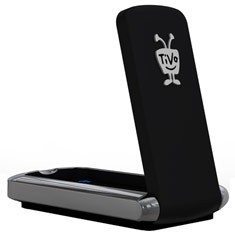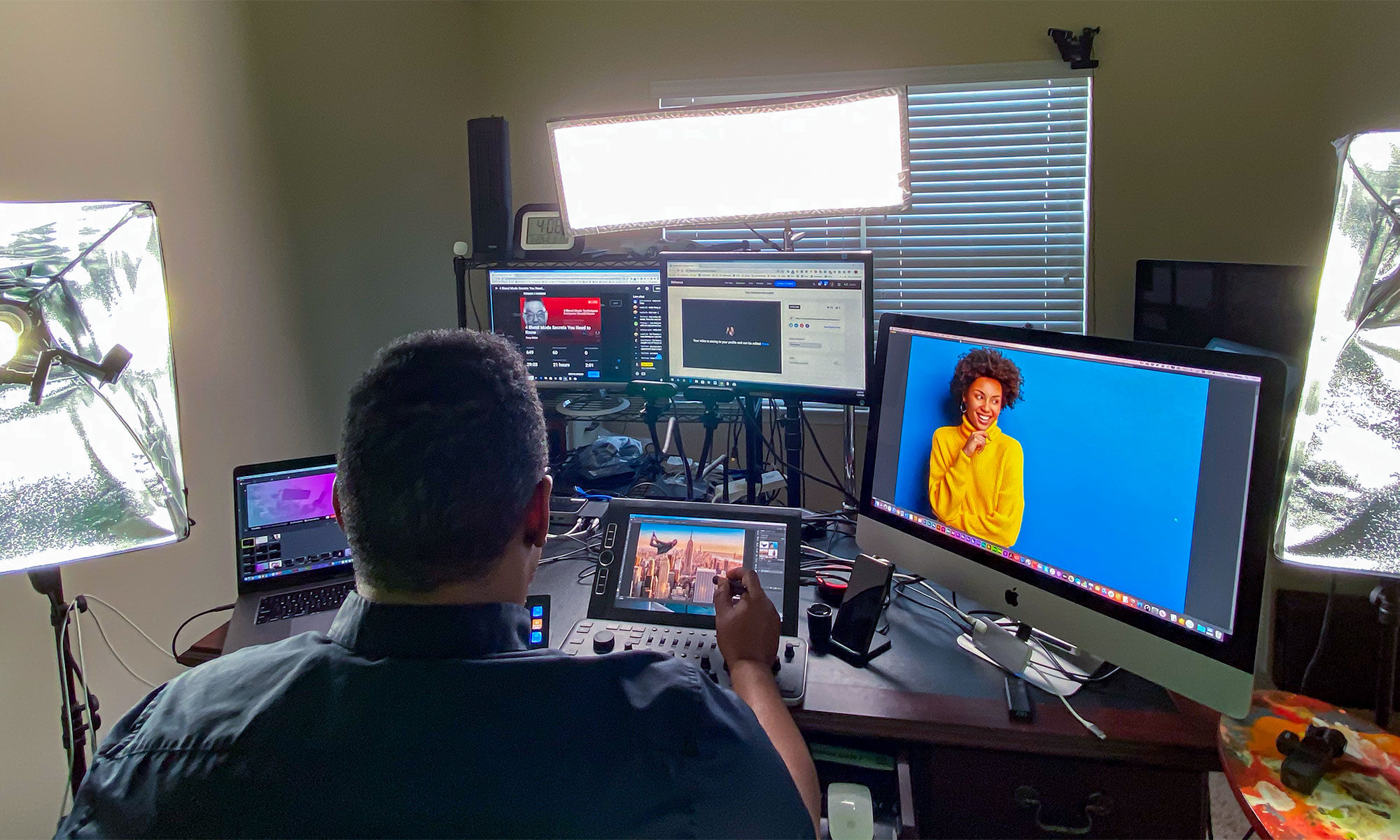
Last week I shared with you TiVo's announcement of their NEW 802.11n based WiFi adapter for their Dual Tuner DVRs including the TiVo HD and New TiVo Premiere. I said then I that I thought this adapter was over priced, but I still wanted to test it to see how much of an improvement it was over the 802.11g based one. I was totally surprised by what I saw when I opened the package.
It's nothing like the old adapter
Don't let the design and pictures fool you. The reason that I thought that the new adapter was over priced was that it looked just like the old one and therefore I figured it connected to the USB port like the old one. It doesn't! This NEW Adapter is a completely new design and instead of connecting via USB it connects to your TiVo's Ethernet port. You also have to plug it into the AC to get power to it. Actually there is nothing TiVo specific about this new adapter. It's just like any other Ethernet based 802.11n Wireless Bridge. Unlike the old adapter you can't even configure it from the TiVo HD. You either have to use your computer or you have to have a wireless router that has a WPS button. Although my New TRENDnet router does have the WPS button, I opted to just configure it directly by plugging into my MacBook Pro via Ethernet. Configuring it was pretty straight forward and once I was done I plugged it into my TiVo HD and it worked perfectly!
.
Is it faster?
Yes, it is definitely faster than my older adapter. I can see an immediate difference in speed when transferring shows from one DVR to another. However, transferring recordings to my computer shows no difference in speed. This is likely due to the transcoding it does during transfer.
The Bottom Line – Is it worth the price?
First off, if you can run ethernet from your router to your TiVo, then run ethernet! It's cheaper by a mile. However, if you have your TiVo in a room/location where it wouldn't be practical to run ethernet then you will need a wireless option. Although I came down on TiVo for the price of this adapter initially, They priced it pretty much in line with other 802.11n Wireless Bridges. For example, here's a Linksys that's about the same price but it's bigger and bulkier than the TiVo model. So you're not paying much if any over what you would pay for other name brand solutions. With that said, since this has no direct TiVo integration, you could use ANY 802.11n wireless bridge and get the same results. Also since this is not TiVo specific it could be used with other devices such as your Blu-ray player. Once you set it up you could use it with any device that has an ethernet port and you want to make it wireless.
Compared to other wireless bridges the TiVo adapter is smaller and more attractive. Style does matter to me so if all things are equal price wise, then I would go with the TiVo adapter.
You can get the TiVo Wireless N Adapter here for $89.99.


Will this adapter work with Tivo Series 2 ?
If it’s a dual tuner Series 2 with an ethernet jack yes.
At least my Toshiba single tuner Series 2 TiVo only has a USB jack, no Ethernet. But one can attach an inexpensive USB/Ethernet adapter to it (which use even TiVo endorses, for networking).
(And, yes, I know that it’s 7 years later, lol. But I just came across this great explanatory review (many thanks, Terry!) and an answer is still an answer. 😉 Can’t the Internet be a wonderful thing?)
Very interesting – I’d been using the DVR from DirecTV and am wishing I had gone the TiVo route now – it’s very much a series of hoops to try and figure out how to offload programs to the computer for archiving…the USB port is inactive, and removing the drive then trying a direct copy doesn’t matter either. The whole idea of output/input capture cards (and software) is not all that appealing either.
Terry —
Thanks for this post.
You said, “I can see an immediate difference in speed when transferring shows from one DVR to another. However, transferring recordings to my computer shows no difference in speed. This is likely due to the transcoding it does during transfer.”
What about transferring recordings _from_ your computer _back_ to the TiVo? Is _that_ faster with N wireless than with G wireless?
I’m not sure I know why you say “transcoding” occurs during TiVo-to-computer transfer. What am I missing here?
But, anyway … does transcoding happen again going back in the other direction? So if you archive a recording from your TiVo to your computer, and they you want to send it back to the TiVo, will the N wireless speed up the latter, compared with G wireless?
Thanks …
Hi Eric,
First off I never put shows on my TiVos from my computer so I have no experience or testing the speed differences there. Secondly, the transcoding comment comes from all my times doing transfers from the TiVo it doesn’t seem to be transferring the raw file from the TiVo’s Hard Drive. Instead it seems to be converting the file on the fly. I could be wrong, but no matter how I do a transfer, Ethernet, wireless, etc. it takes the same amount of time which leads me to believe that some type of file conversion (transcoding) is going on.
Thanks, Terry,
I have discovered at:
http://www.tivocommunity.com/tivo-vb/showthread.php?p=7097289#A4
that:
“High-definition recordings are stored on the TiVo’s hard drive as transport streams in a proprietary format. When you download a recording from the TiVo with a web browser (or TiVo Desktop), the TiVo remuxes the recorded streams stored on the hard drive into a single MPG file that can be played on a PC or Mac. This on-the-fly remuxing does not have any effect on quality, but it does cut throughput by 50-70% compared to MRV between two TiVos.
“When transferring recordings between two TivoHD DVRs, throughput is about twice as fast (20-24Mbps typical), because recorded files are transferred just as they are stored on the hard drive.”
In a book I have, Charles Poynton’s “Digital Video and HDTV,” the author indicates that an MPEG-2 “transport stream” (TS) is contained in a bunch of relatively small packets and is designed for “transmission of multiple programs on relatively error-prone media.” (That seems to describe the transmission of cable TV to a T.) “Multiple programs” would encompass, I’d assume, the video portion and the audio portion of a single cablecast. In a TS there are multiple independent “program clock references” that synchronize the separate programs.
In an MPEG-2 “program stream” (PS), which is designed for storage on relatively error-free media such as a computer hard drive, there are also packets, but they can be up to 64 KB in length, where a TS packet is only 188 bytes in length. Furthermore, synchronization in a PS is achieved through a “system clock reference,” not through program clock references.
So my guess is that in going from a TiVo to a computer, the stream is converted by the TiVo from TS form to PS form, which involves CPU overhead on the TiVo and slows things down a lot. in going from the computer back to the TiVo, I’d assume the computer takes responsibility for converting the PS back to TS form, and the slowdown, if any, would not be as great.
Terry,
I have a Sony blu Ray BDP-S350 (like you do/did). I just got the Tivo wireless N bridge you describe in this article and wondered if there was a way to allow my blu ray to finally access the internet without the need for a hard drop ethernet line.
You mention it’s possible in the article, and although I can get the unit to work great with my Tivo HD box in order to connect to my D-Link 655 to access my network and transfer back and fourth from the Tivo to the i-Mac…I can not for the life of me get it to work with my BDP-s350. The blu-ray simply can not seem to find my network.
Any thoughts?
Thanks!
That’s odd, because once it’s setup it should be simply routing the internet via the Ethernet port. Did you try entering a Manual IP/DNS address on your Sony?
I finally got it to work. It was actually a problem with my router as opposed to the blu ray player. I have my router set up to block all incoming attempts at connection unless their MAC address is placed on the approved filter list. I thought i had done this…but I must not have saved the settings correctly.
Thanks for your help, Terry! I really enjoy all the content you put out (as I am a heavy Photoshop/Lightroom user – wedding/portrait photographer), and think this blog for personal tech stuff is cool too =)